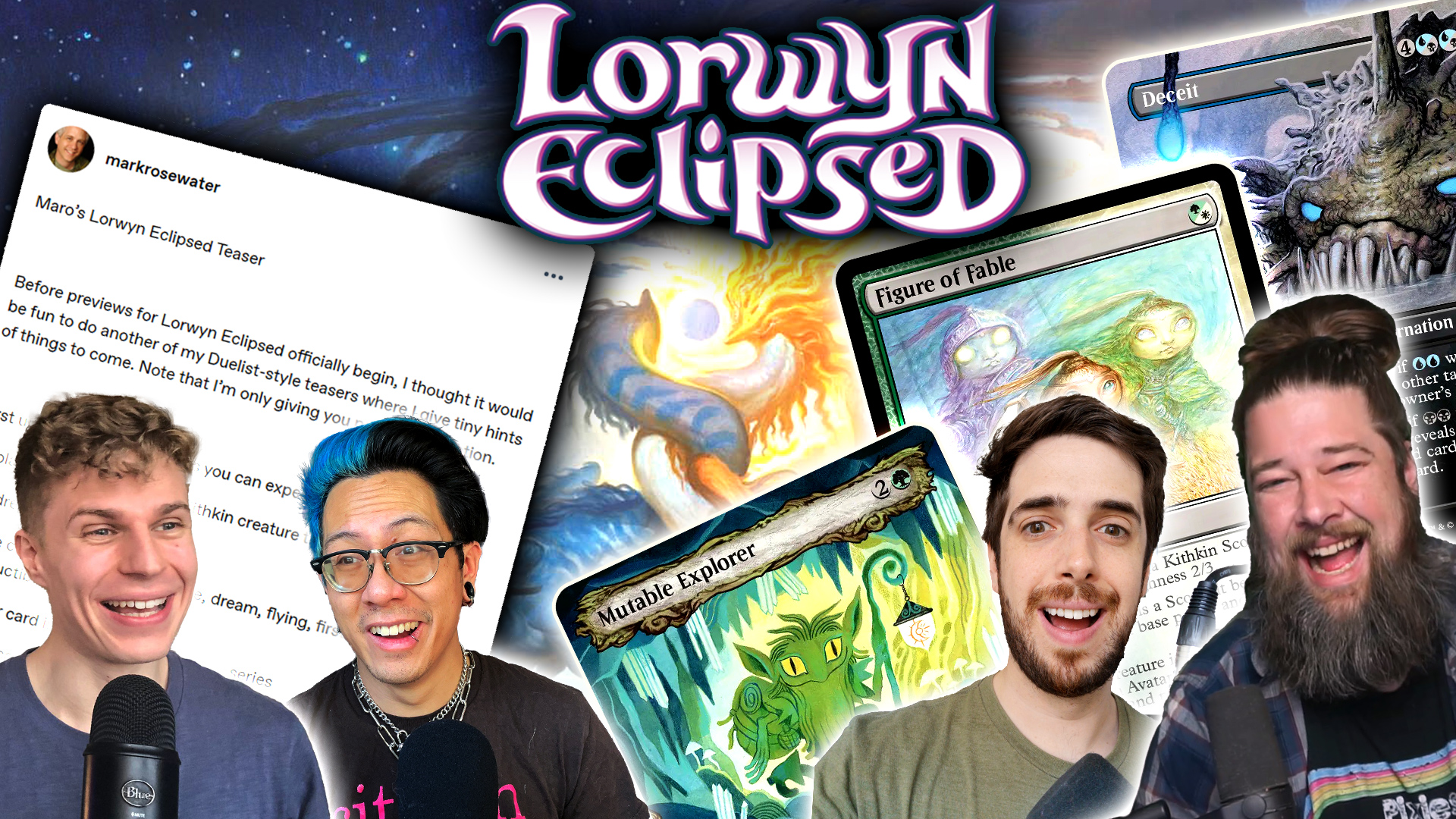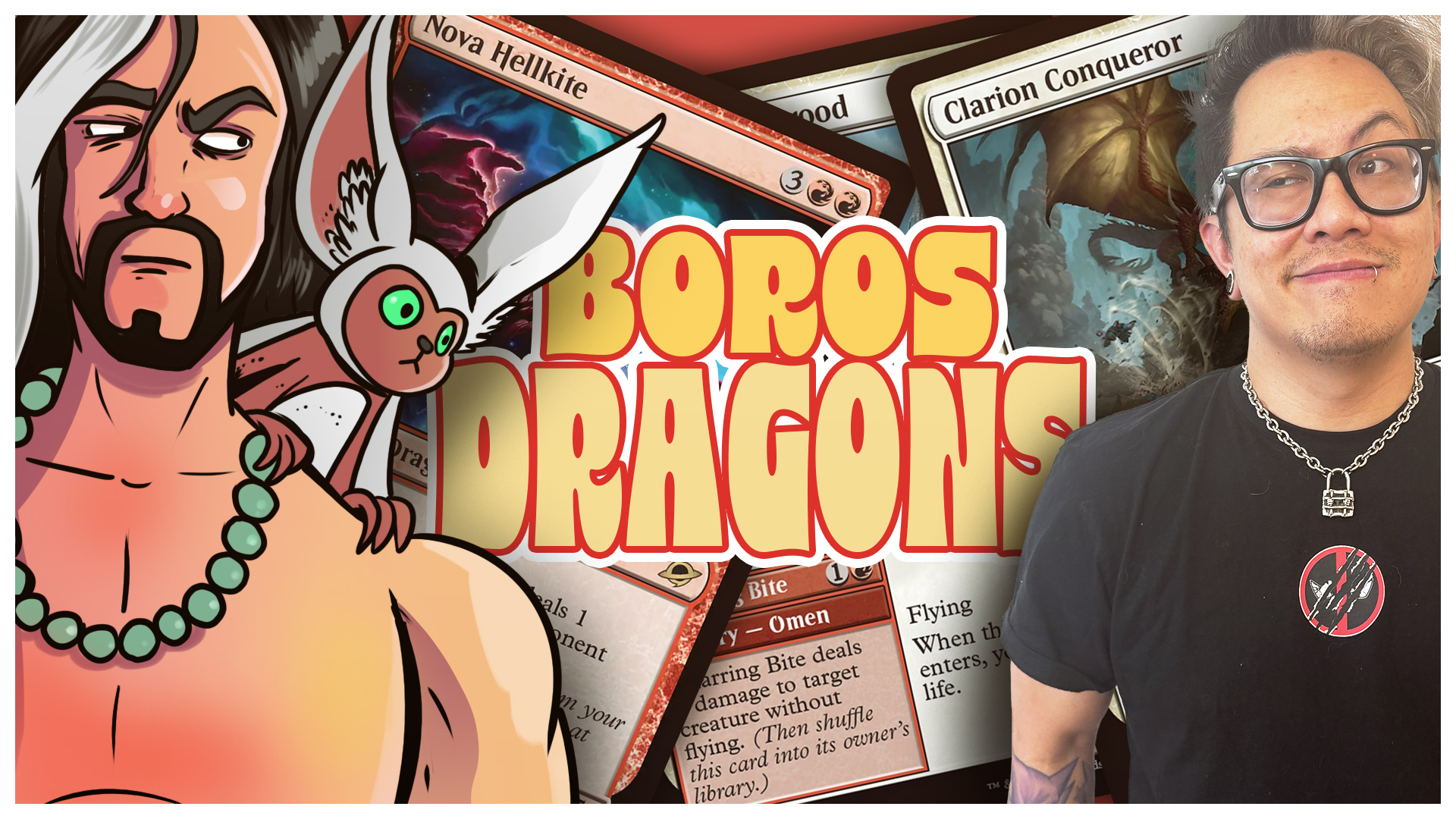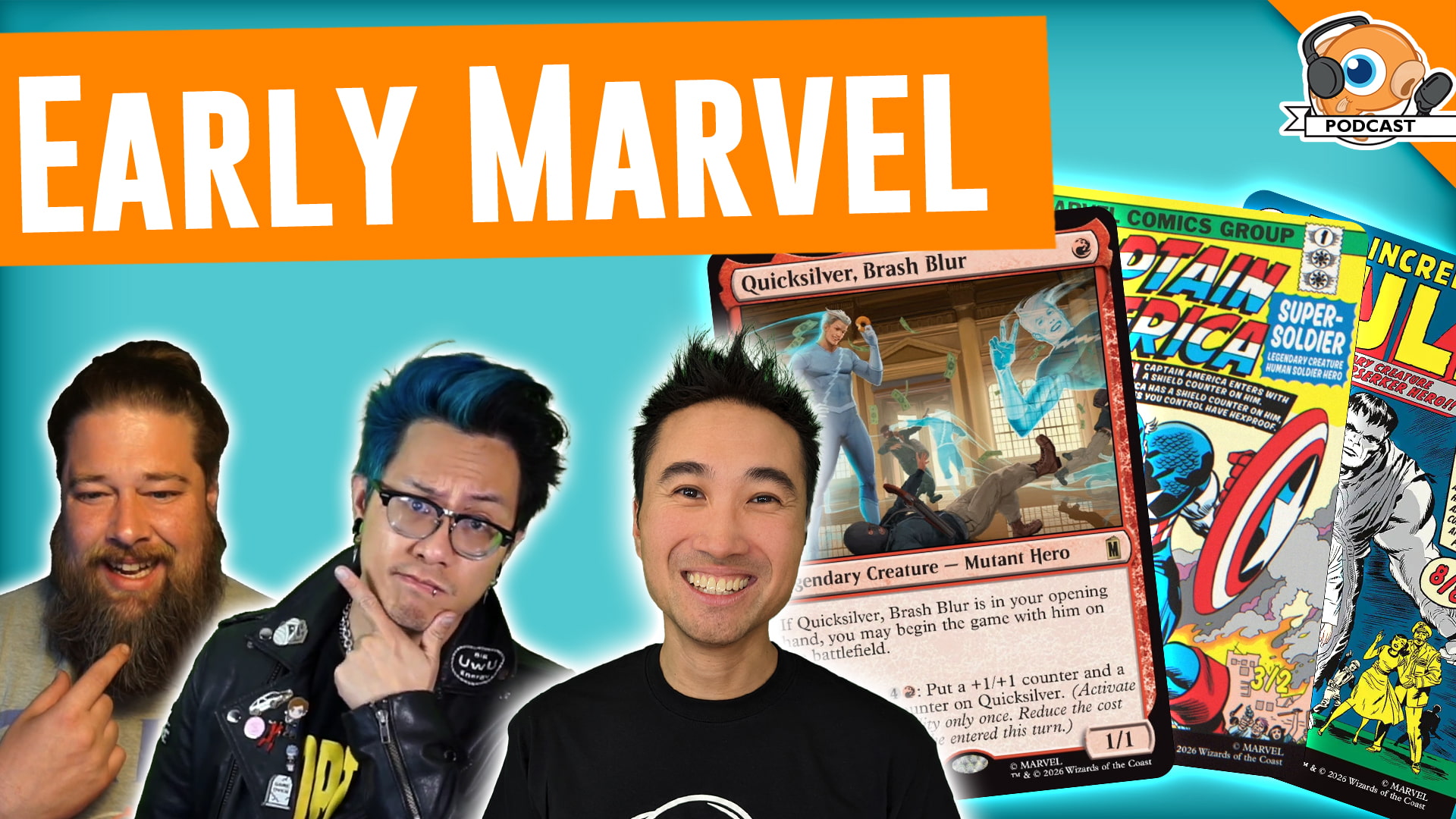Raising the Dead: A Guide to Legacy Reanimator

Reanimating Legacy
Right up until the Magic Online Legacy leagues were announced, I had yet to play in a league for any format. The biggest reason is that I use the limited time I have to focus on my favorite format (Vintage), and there aren't any Vintage leagues. Other than that, I wasn't sure that I'd enjoy leagues. I'm a pretty open-minded person, but when it comes to Magic Online I'm stubborn and resistant to change.
Legacy leagues intrigued me, but I wasn't sure about jumping in right away. I hadn't played Legacy for quite a while and I didn't have any decks anymore. I decided to make a Pauper deck and run through a league to see if it was something I would like. After reading a fantastic article about Pauper Affinity by Jake Stiles, I played his list in a league. I did well enough to break even, and I enjoyed the league experience enough that I decided now would be a great time to get back into Legacy.

Brainstorm by Christopher Rush
Before playing Vintage, I played and wrote about Legacy exclusively. Even after shifting to Vintage I've always loved Legacy because Wizards of the Coast has done a great job at keeping the formats distinct. There are cards that are restricted in Vintage that Legacy allows four copies of, like Brainstorm and Ponder. Legacy also has a lot of cool and competitive decks that couldn't compete in Vintage. In Legacy, you can play the most powerful Jund deck complete with Deathrite Shaman and Bloodbraid Elf. People have played Elves in Vintage before, but in Legacy it's a real deck with the potential to spike an event. Many people would say Blue is the best color in both eternal formats, but I think that in Legacy the other four colors are closer in strength.
In the past, I had played RUG Delver, BUG Delver, Shardless BUG, Reanimator, and Sneak and Show in Legacy. Of all those decks, Reanimator was one of my favorites, and conveniently I owned most of the cards online due to owning Vintage Oath. To top it off, Reanimator is mostly Blue and Black, and I'm a sucker for Underground Sea.
Here's what I ended up making:

This version of the deck is the one I did the best with in one of my plays through the League. The essential core of the deck doesn't change much, and that's what I'm going to go over today.
As you can see by looking at the list, this is a combo deck. Instead of comboing out with some infinite loop or storm kill, in Reanimator, Griselbrand on turn one is your combo. In some cases you might go for one of your other fatties, but the concept is always the same. You're using your cards to get a huge discount on a game-breaking behemoth. The resulting tempo gained is often unbeatable. These creatures all cost a ton and their abilities were balanced accordingly. When you're landing one of these creatures on turn one or two, that doesn't leave your opponent much time to mount a defense.
Why Play Reanimator?
Reanimator is a turn one, or turn two combo deck much of the time. Of all the combo decks I've ever played, Reanimator is the most consistent. There's Lotus Petal for acceleration to make the early combo happen often. It's not that hard to put together Entomb / Careful Study, Lotus Petal, and Reanimate in the same hand. Decks typically run eight or nine reanimation spells, which further adds to the consistency.
Reanimator also gets to play reactive disruption and protection in the form of Daze and Force of Will. Being a Black deck, Reanimator also gets access to Thoughtseize, so there's proactive disruption as well. Together this combination accounts for ten or more disruptive spells, which is a formidable control package for a combo deck.
Entomb is more than just a combo enabler in this deck. It is also like playing four copies of Vampiric Tutor. With Entomb you get to play a toolbox of creatures. If you're facing another combo deck you can put Iona, Shield of Emeria into play to shut off a key color. Iona locks out decks like Storm, Burn, and other types of reanimation decks. Elves and Dredge really hate it when you get an early Elesh Norn, Grand Cenobite out, and Blazing Archon is pretty great for making the Eldrazi decks have no way to attack you.
Weaknesses
Reanimator has some issues with graveyard hate. The most common main deck threat to Reanimator is Deathrite Shaman, but there are a host of other cards that people can play to give you a hard time. All is not lost though, I've beaten my opponent's turn-one Deathrite Shaman when I was on the draw more times than I can count. Remember, Deathrite is a creature and as such has summoning sickness. It is entirely possible to combo off while your opponent's Deathrite Shaman is still getting over jet lag.
Death and Taxes is a bad matchup for Reanimator due to their prison elements, access to Karakas and Swords to Plowshares, and the many powerful hate cards found in White. Some versions of Miracles contain several cards that give Reanimator a hard time as well. That's why my Reanimator sideboard is built specifically to fight hate cards.
Being a combo deck, Reanimator can sometimes just lose to itself. Many of the games I've lost with the deck were due to keeping a hand with some of the combo elements and a few cantrips, and I just couldn't find the missing piece in time. With anywhere from four to eight cantrips in the various builds, finding the right card(s) is pretty easy. Careful Study also digs through unwanted cards, and Entomb gets silver bullets into the graveyard when needed.
Reanimator is a fairly easy deck to play due to the high percentage of powerful starts, but after game one things get a lot trickier. Sideboarding can be tough because your opponent might have an unexpected sideboard card. If you learn how to know what you'll face from your opponent, you can bring the correct anti-hate cards in. Nothing is worse than having the wrong answer to your opponent's sideboard cards. Again, there's a chance that you can be faster than most sideboard cards, but you still have to have a contingency plan.
The Core of the Deck: Combo Enablers


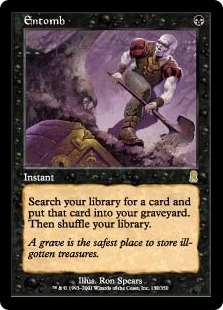
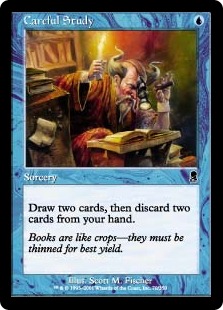
The core of Reanimator is, as you would expect, built around Reanimate, Exhume, Entomb, and Careful Study. Those four cards are always going to be four-ofs in the deck. Some people play an additional reanimation spell, usually Animate Dead. In the list that I posted I chose to play one Show and Tell, which acts as a ninth way to get out one of your bombs. Show and Tell is also Blue, so it's relevant even when you don't need to cast it. The other reason I often play the first Show and Tell over Animate Dead is that Show and Tell gives you one main-deck out to an early resolved Deathrite Shaman.
Card Selection and Filtering


The cantrip suite always includes four Brainstorms and up to four Ponders. These cards are in there to make sure we hit the cards we need to hit, and they help fuel Force of Will to protect our combo. If I need to trim cards from the deck post sideboard, I'll always cut one Ponder and never any Brainstorms because Brainstorm is a far better Magic card. One quick note about Brainstorm for any readers who don't play Legacy: you don't need to cast it during your opponent's end step. Also, please try to combine it with a fetch land. Without a fetch land, you end up "Brainstorm locking" yourself for two turns as you draw the worst two cards from your hand. The best way to use Brainstorm is to draw new cards and shuffle away things you don't need.
Control, Disruption, and Protection

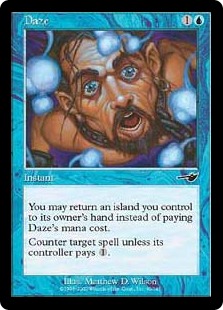
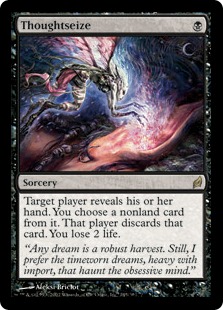
The protection package includes four Force of Wills and some number of Dazes. I like to play four copies of Daze, but I don't always do so. Opening hands with Daze are much harder for your opponent to beat, but the card also gets progressively worse as the game goes on. When you're on the draw Daze also loses a lot of value as your opponent is always one land drop ahead of you, and they're even more likely to be able to pay the additional mana to stop your counter. Thoughtseize is an incredible card in this deck because it gives you information about what to play around, it proactively protects your combo, and in a pinch you can use it on yourself to bin a fattie.
Big Scary Monsters
The last core part of the deck are the reanimation targets. Four Griselbrands used to be the norm, but three is what most people play now, and I think that's the correct number. Big Gris is often your first choice for game-domination because he's hard to race and refills your grip. Griselbrand is not perfect though, and the flying Yawgmoth's Bargain is weak to Karakas and Swords to Plowshares.



The other creatures to reanimate all have special roles to fill, and the slots can be adjusted according to your expected metagame. Iona is your silver bullet against combo decks, and Elesh Norn is for creature heavy decks. Any deck that can't hold a creature on the battlefield under an Elesh Norn is one in which you will actively try to reanimate her first. Other than Elesh and Iona, people might choose to play several creatures. Archetype of Endurance and Inkwell Leviathan are great against decks with Karakas or Swords to Plowshares, Tidespout Tyrant is great all-around at bouncing problematic permanents, and Tyrant is one of the few reanimation targets that can take out lands. Grave Titan is able to be hard-casted and is a very fast clock that gets around Liliana of the Veil. Ashen Rider is used in some decks as spot removal, and it's good against an opposing Show and Tells.
The Mana Base
Reanimator uses the typical fetch land mana base like most decks in the format. There's no better way to get the proper dual lands into play in a timely fashion. The base of the deck is Black and Blue so there are four Underground Seas. My current build incorporates a light Green splash, and I've got two Tropical Islands in my list. Many decks choose to play one Tropical Island and one Bayou to provide more access to Black mana, but I've chosen to go with Tropical Island instead. The reason I'm playing Trop instead of Bayou is that you need Islands to free-cast Daze.




The Sideboard
Like any deck in Magic, the sideboard will be dependent on the expected metagame. Reanimator has its roots in a pure Dimir build, but the prevalent contemporary designs play a light Green splash for some extra permanent removal. Green is normally utilized because it gives access to Abrupt Decay and Golgari Charm. There are benefits to both a straight U/B build and a UBg build which are important to know about.
Without the Green splash, UB Reanimator is much more resilient to Wasteland. All you need to do with this version of the deck is fetch up a basic Island and Swamp and you can play every card in your deck. This benefit doesn't seem like a huge deal until you inspect the mana base of the deck. Reanimator isn't built to play the long game; drawing extra lands is very bad for the deck. Since the mana curve ends at two, two lands is usually enough, and the deck only only runs 14 lands. The downside to playing only Blue and Black is that those colors lack good non-creature removal. The only option in these colors is to lean entirely on bounce spells like Chain of Vapor and Echoing Truth. Often times bouncing a permanent will be enough to open a window with which to combo off, but sometimes bounce just won't get you there.
Adding Green to the deck gives access to Abrupt Decay. and if necessary Golgari Charm, Nature's Claim, or Krosan Grip. Usually Abrupt Decay is enough removal as it hits most relevant permanents, but sometimes you need to destroy something that has a mana cost over three.
The general concept behind the sideboard in Reanimator decks is that you need to fight the hate cards your opponent will bring in. In Reanimator, your creatures are flat-out better than your opponent's. Since your cards are so much stronger, your opponent's counter-strategy is going to be disrupting your graveyard plan. They could bring in cards like Grafdigger's Cage, Tormod's Crypt, Rest in Peace, or even something like Extirpate or Surgical Extraction. Once you're heading into game two, you're going to need to decide if you want to fight those hate cards or side-step them with something like Show and Tell.
Since Reanimator plays Entomb as a tutor of sorts, the deck gets to play some silver bullets in the main deck as well as the sideboard. Some decks have to devote several cards to certain decks, but often times Reanimator can get away with aggressively trying to Reanimate a specific creature.
What Does Each Sideboard Card Do?

Pithing Needle is one of the best cards in the sideboard due to its flexibility and cheap casting cost. The work that this one card does is amazing. It's so handy I've considered running one in my main deck. Deathrite Shaman getting you down? Needle it. Karakas threatening to bounce your Griselbrand? Stick it with a Needle. A large percentage of cards that hurt Reanimator can be shut down with Pithing Needle, and I bring it in more than most other sideboard cards.

Abrupt Decay is an all-star card in Legacy. The best cards in the format are the cheapest ones, and Decay hits them all hard. Some cards like Counterbalance can be hard to remove, especially if Miracles has its Counter / Top combo going. You can also use Decay to take out your opponent's attacking creatures if need be, but most of the time you're better off destroying cards that are keeping you from reanimating a fattie.

Echoing Truth is another catch-all card. Sometimes a permanent is too expensive to be targeted by Abrupt Decay, and Echoing Truth can be a lifesaver. You can also use the "echoing" ability of Echoing Truth take out a horde of tokens against Dredge or Young Pyromancer. In mirror matches Truth is also a trump card. In mirror matches your opponent is likely trying to stick Iona and name Black, and this is where having Blue bounce shines.
The specific situation that can arise that makes me always have at least one Echoing Truth in my 75 is where you're facing multiple Grafdigger's Cages. This is something that hasn't come up all that many times, but when it does, you'll be happy you have one. I've had games where I brought in more Pithing Needles than Abrupt Decays and been frustrated by multiple Cages on the battlefield.
Golgari Charm

Golgari Charm is mainly here to kill enchantments, but it is also great at taking out tokens. I sideboard this in against decks that play Empty the Warrens. Belcher can fire off one big Empty against you and Golgari Charm can come in and sweep away all those Boblin tokens. There are also several X/1's in Death and Taxes, so I'll bring this in there too.

Nature's Claim is the cheapest answer to artifacts or enchantments in Magic. This card can be shut out quite easily by Chalice of the Void so be careful.

Show and Tell gives you a way to combo without using the graveyard. I bring this sorcery in against Deathrite Shaman decks and other decks that pack cards like Rest in Peace. The downside to Show and Tell is that it doesn't play well with Careful Study and Entomb.
The tension between the Show and Tell plan and the reanimation plan rears its head when you draw Careful Study and a creature in the same hand that does not contain a Reanimate or Exhume. If you discard the creature to Careful Study and draw a Show and Tell before hitting a reanimation spell, you'll feel pretty lousy. One proposed solution that I read about is to side out some number of Careful Study when you bring in Show and Tell. I have been siding out one Study and it's seems to be the right move.

Massacre is for the Death and Taxes matchup, but it comes in against any deck playing both Plains and creatures. Death and Taxes will put the squeeze on your mana base so a free to cast board wipe is just what the doctor ordered.

Blazing Archon is a card that I tried out in the past, but I haven't been running it recently. The reason I was running it was to combat the Legacy Eldrazi Stompy decks, specifically ones that played only Dismember for removal. Those decks have to attack to win and one Dismember won't take down Blazing Archon.
Lately I've been playing without Blazing Archon and not missing it, but if you expect the colorless Spaghetti Stompy (Eldrazi), I suggest trying the Archon.
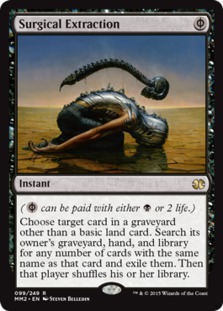
I like to play one Surgical Extraction in my list as a trump card against mirror matches, or other decks that reanimate creatures. Tin Fins, Burning Reanimator, and the newer B/R Reanimator decks all hate to see Surgical Extraction on their reanimation targets. It's free to cast using Phyrexian mana, so it is often a surprise blow-out.
This is also a card you don't want to have played against you. It's important to go after your opponent's hand with Thoughtseize if you suspect Surgical Extraction or similar cards. Otherwise try to make sure you always have some countermagic if possible.
Sideboarding with Reanimator
Instead of writing out a card-for-card sideboarding guide, I'm going to go over some general tips you can use and discuss my reasoning behind them. Exactly which cards to bring in is a bit of a gray area unless you know exactly what sideboard cards your opponent is bringing in. Most of the time you'll know approximately what cards your opponent will use, but sometimes you can be surprised by someone bringing in a specific card you don't expect. I use a general set of guidelines, and I change which anti-hate cards I bring in game three if I have to. A good example is when you're facing a card like Leyline of the Void that doesn't get hit by Abrupt Decay. Most of the time this won't happen, but not every opponent plays the exact same sideboard.
Reanimator is really tight on space. If you try to make room for cards by taking out the core of your reanimation strategy, you take away the best aspect of the deck: its speed. It's not uncommon to Reanimate something on turn one or two, which is faster than Rest in Peace when you're on the play. For this reason I rarely take out Reanimate or Entomb. If you're trying to beat a Deathrite Shaman you stand a better chance of being faster if you keep your four Entombs and Reanimates.
If you're trying to beat a fast hate card like Deathrite, bringing in Show and Tell is a good idea, but not at the cost of slowing the deck down. My solution has been to trim one Exhume and either one Careful Study and something else. or two copies of Careful Study. In a pinch you can still use one of your copies of Thoughtseize to discard a fattie if need be.
Pithing Needle is really the all-star of my sideboard. I bring in two or three in a lot of match ups. Against BUG Delver or Shardless BUG I make sure to bring in three because it hits their Deathrite Shamans, Liliana of the Veil. and Jace. the Mind Sculptor. To make room for Pithing Needle you can trim a Thoughtseize. You can take out a Daze or two when you're on the play or when you're facing a deck that makes enough mana to consistently pay one mana to protect its spells.
Abrupt Decay is great at killing things, but it only stops one target. I often prioritize bringing in Pithing Needle over Abrupt Decay because Pithing Needle stops multiple copies of the same hate card from working. If you sideboard out too many cards and try to one-for-one every single threat and hate card your opponent plays you're likely to fail. The matchups where Abrupt Decay is the best are against decks that are playing Chalice of the Void, Blood Moon, Counterbalance, or other cheap permanents that Pithing Needle doesn't hit.
Thoughtseize is a card that on one hand seems easy to trim from my lists for other cards, but on the other hand when you play with it you see how valuable it is. Lately I try to keep at least two in my deck when I'm facing a deck with counterspells. Thoughtseize is also great in the mirror or other decks that play Griselbrand because you can Reanimate creatures from your opponent's graveyard.
Reanimator plays a lot of Black cards for a Blue-based deck, so you need to be careful of how many Blue cards are left in your list after sideboarding. Force of Will is useless without a Blue card to pitch, and if you go to less than twenty Blue cards in your list you're not likely to have a live Force on turn one. The early game is where the countermagic in Reanimator is the best because Daze and Force of Will work best against a tapped out opponent. Later in the game Force of Will is one of your only ways to protect your reanimation target, so use it sparingly.
If you find yourself playing against another Reanimator deck, don't put a creature in your graveyard unless you're going to use it that turn! Bring in Surgical Extraction and Echoing Truth so you can use those on whatever creature they Reanimate. Chances are your opponent will try to resurrect Iona and name Black. This is where Echoing Truth really shines. Also don't forget that you can cast Entomb in response to your opponent's Exhume! As a matter of fact, Exhume is probably a great card to trim in this match up because there are many times where it won't give you an advantage.
Wrap-Up
If you love doing broken things, Legacy Reanimator is a great deck for you. On Magic Online Reanimator is actually a affordable deck to build thanks to the MOCS promo of Griselbrand. Some Reanimator lists play Show and Tell and / or Jace, Vryn's Prodigy, but other lists omit those cards and that brings the price down significantly. I've seen a list that went 5-0 in a Legacy league that costs under five-hundred tix to make. That's a good price for a non-rotating deck that won't get banned out of existence.
I find the deck to be really fun to play. I love that I get to play enormous creatures in the same deck as Force of Will and Daze. It can be frustrating at times playing a combo deck like this; there can be some clunky draws at times. Then again, sometimes you just crush a bunch of games in a row and feel like a million bucks.
Playing in these leagues has gotten me hooked on Legacy again. I'll never stop loving Vintage, but Legacy is it's own distinct and amazing format. The league format is also great for me, as my personal life and responsibilities make finding time for scheduled events difficult. I really hope there will be some Vintage leagues for me to play in at some point in the near future!
Special thanks to Garrett Robb for letting me use the Reanimator banner he made. I'll be back soon with some sweet Vintage content!
You can follow me on Twitter @josephfiorinijr - Islandswamp on MTGO.


